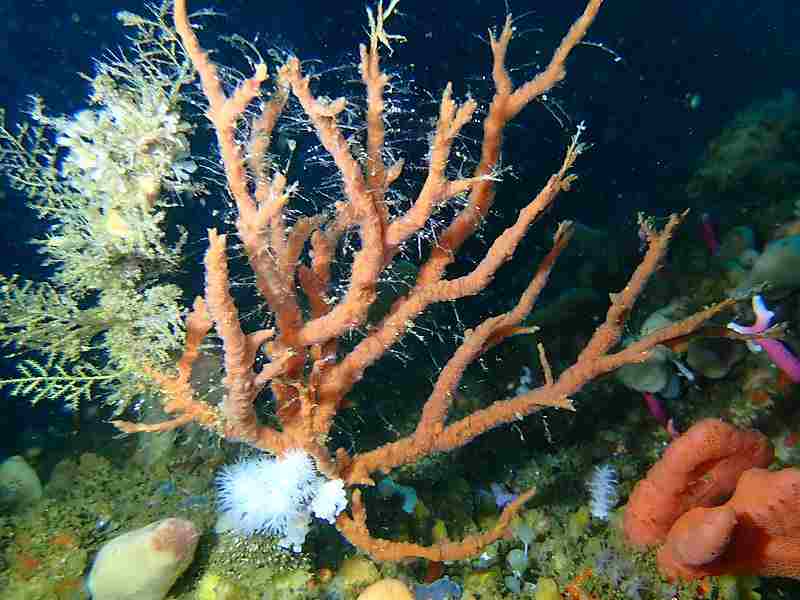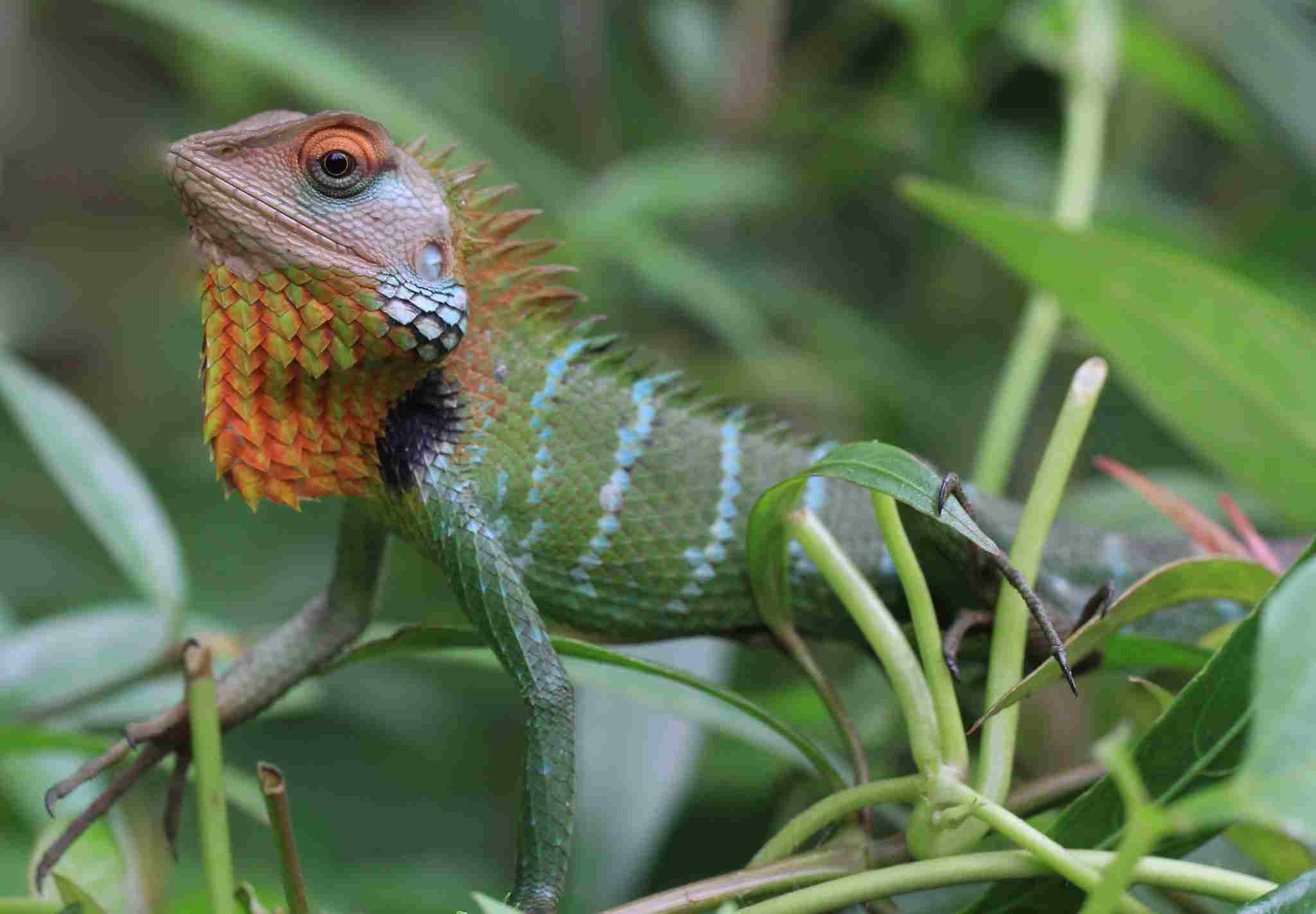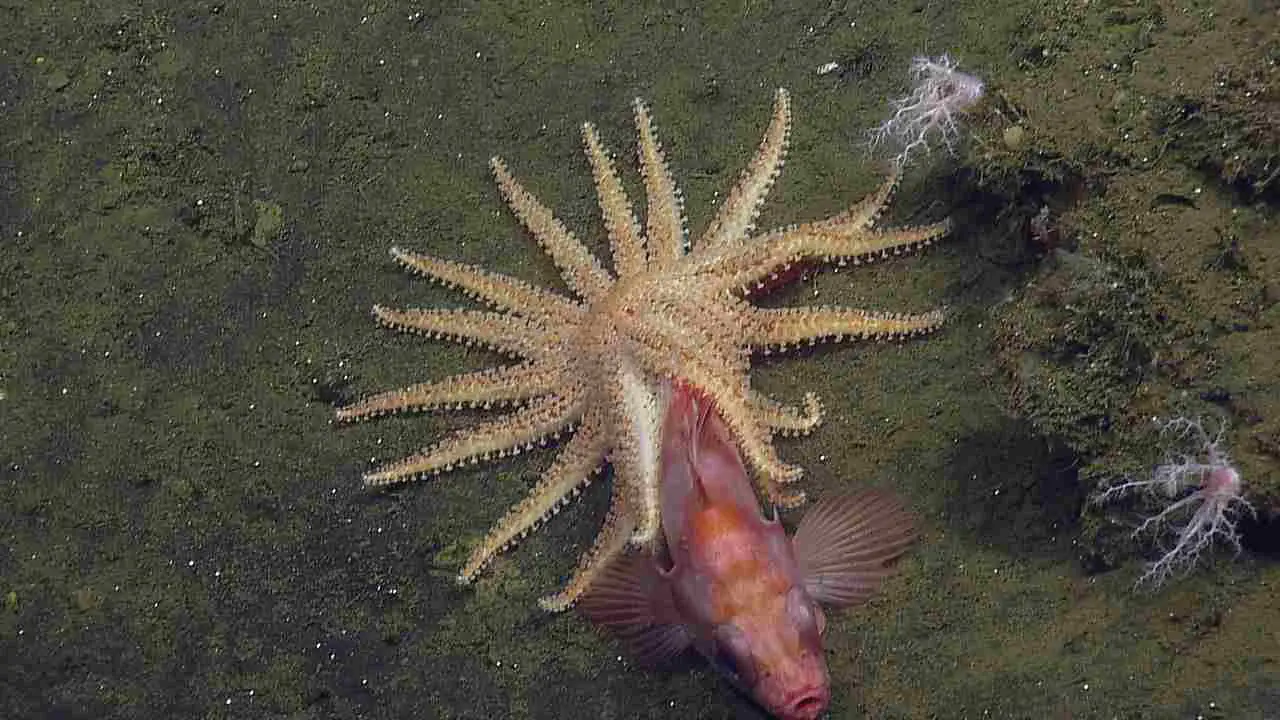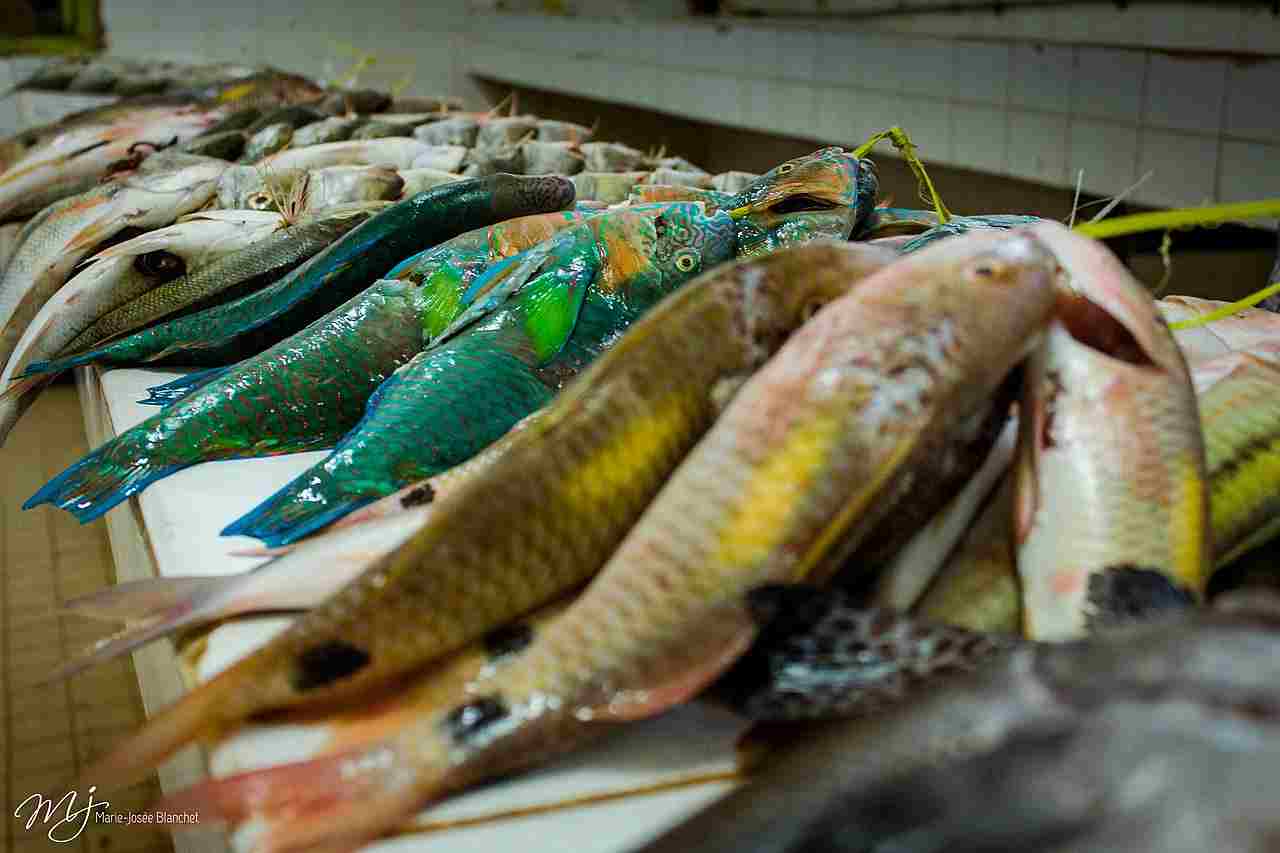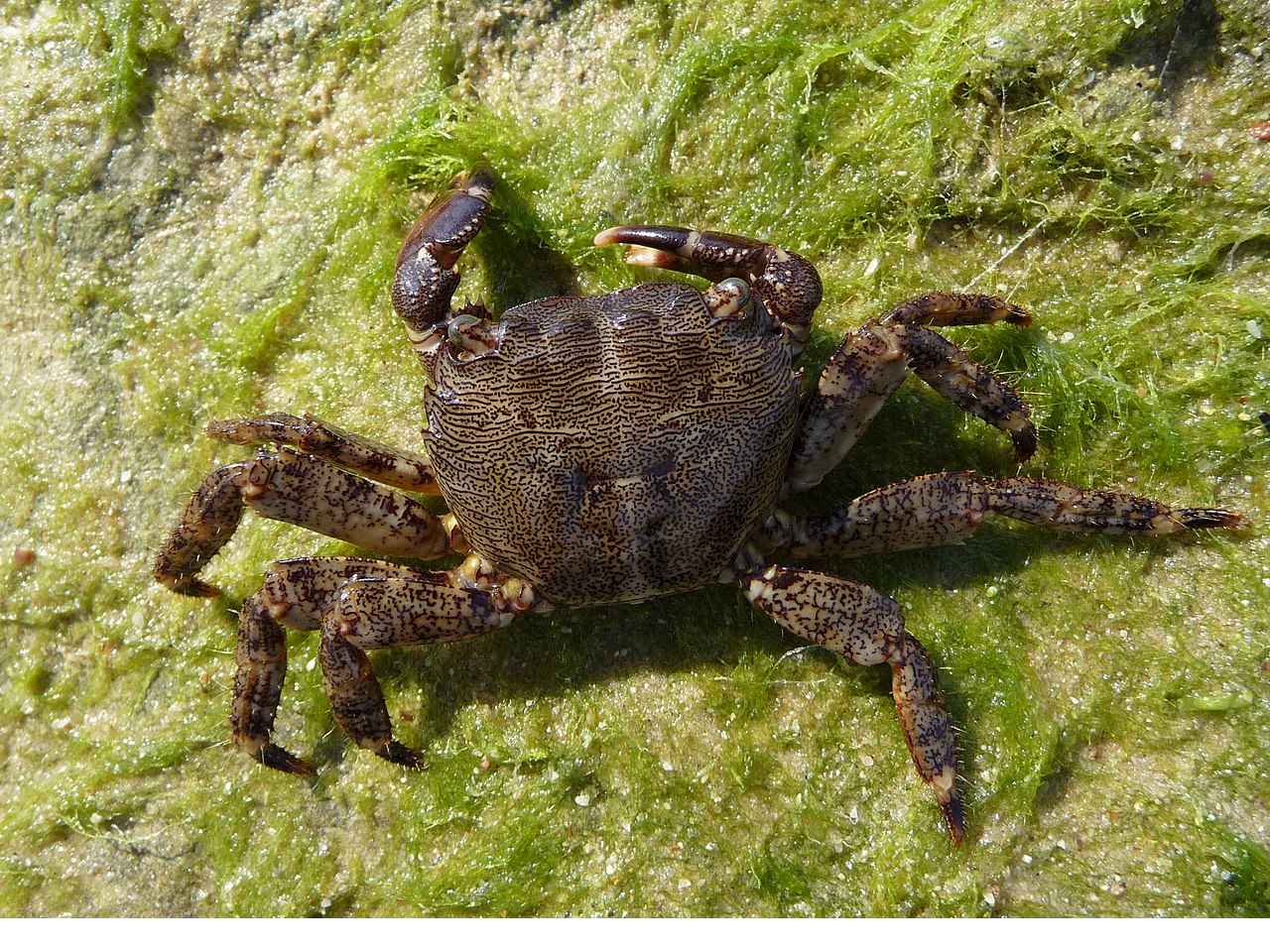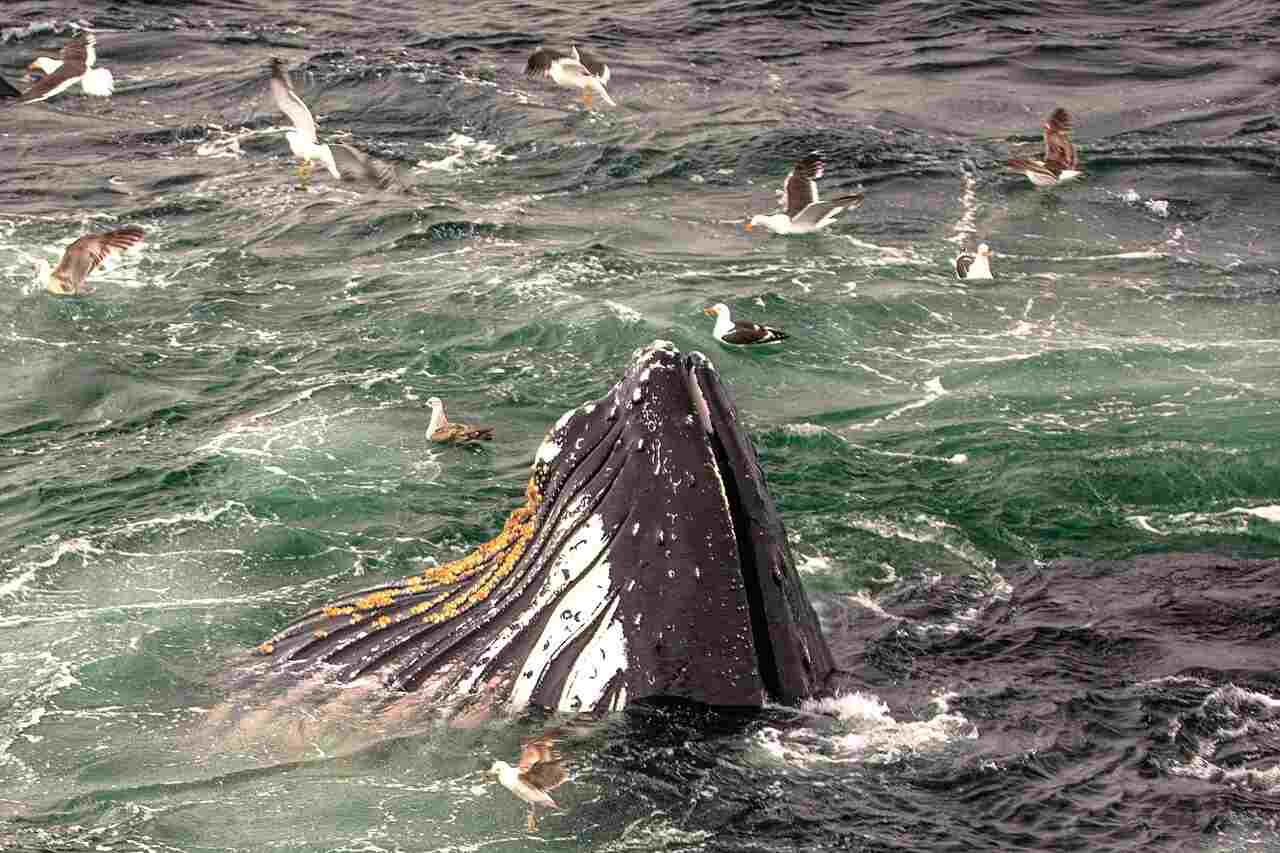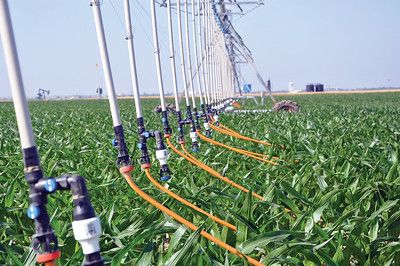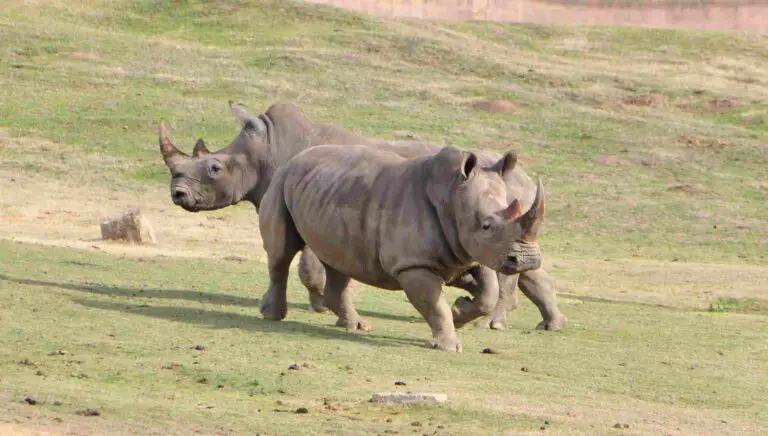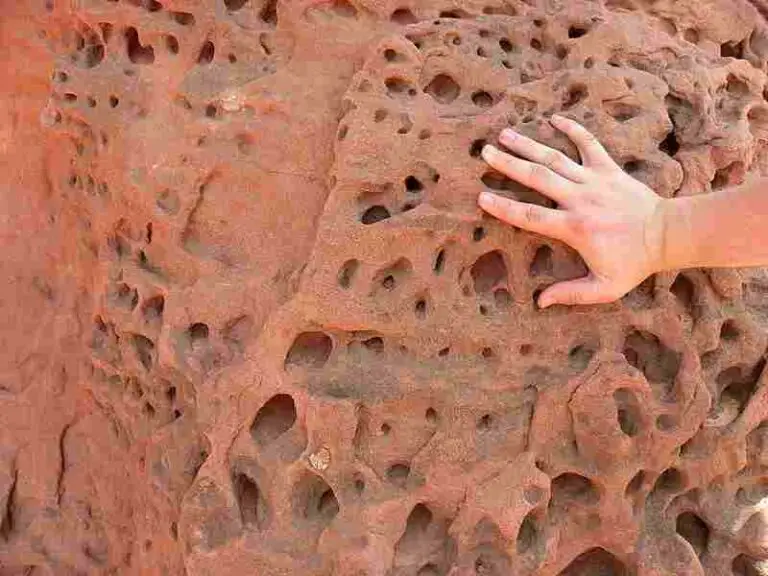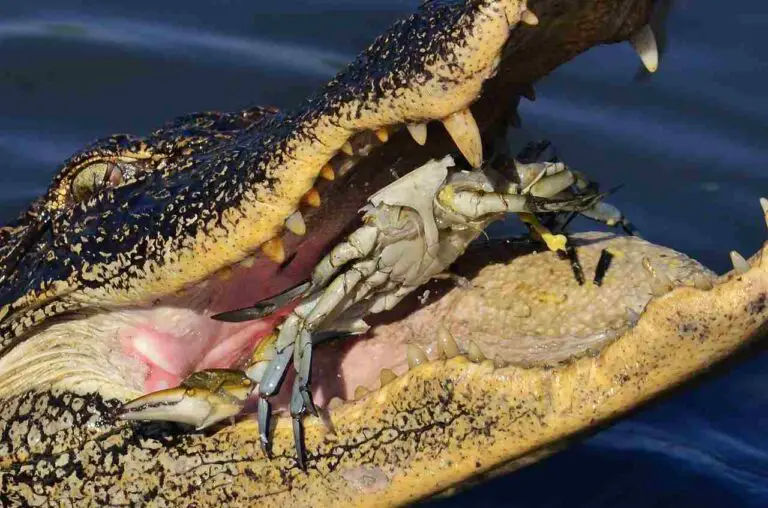35 Great Barrier Reef Animals and Their Ecological Roles, Attributes
Great Barrier Reef animals include reptiles like sea turtle, saltwater crocodile, sea snakes and marine lizards; mammals like bottlenose dolphin, dugong, Australian fur seal and humpback whale; fish like parrotfish, clownfsh, butterflyfish, giant trevally, surgeonfish, anemone fish and humphead wrasse; crustaceans like shrimps, lobsters and crabs; mollusks like sea snails, giant clams, octopuses and nudibranches; poriferans like staghorn sponge, and barrel sponge; echinoderms like sea urchins, sea stars, sea cucumbers; coelenterates like corals, sea anemones, jellyfish; aquatic birds like crested tern, brown booby, pied cormorant; and annelids like Christmas tree worm.
This article discusses Great Barrier Reef animals and their characteristics, as follows;
A). Reptiles (as a major category of Great Barrier Reef Animals)
Reptiles in the Great Barrier Reef, play an important role as biotic factors.
This is because they contribute to both diversity and the overall ecological balance of their marine habitat.
Although reptiles are not as abundant as cnidarians or fish species in the reef, they are still important members of the marine community, and can be found traversing the Great Barrier Reef in search of food and other resources.
Examples of Reptiles in the Great Barrier Reef
Some notable reptiles found in the Great Barrier Reef include; hawksbill sea turtle; green sea turtle, saltwater crocodile, sea snakes, and marine lizards. Each of these examples is discussed briefly below;
1. Hawksbill Sea Turtle (Eretmochelys imbricata)
The hawksbill sea turtle is a specie of marine turtle found in the Great Barrier Reef.
It plays a major role in controlling sponge populations, on which the turtle feeds [10].
Hawksbill sea turtle prevents overgrowth and overpopulation of sponges, so that they do not harmfully dominate the reef habitat or cause resource depletion.
2. Green Sea Turtle (Chelonia mydas)
The green sea turtle is arguably one of the most iconic reptiles in the Great Barrier Reef.
It is herbivorous and feeds on algae and seagrass, helping to regulate plant growth, and to maintain the health of underwater seagrass beds.
Green sea turtle also contributes to nutrient cycling by depositing its eggs on sandy beaches [22], a process/activity which stimulates fertilizes the surrounding soils.

3. Saltwater Crocodile (Crocodylus porosus)
Saltwater crocodiles do not occur exclusively (or notably) in the reef habitat, yet they are known to inhabit the coastal and estuarine regions surrounding the Great Barrier Reef.
They function as apex predators, helping to regulate the populations of other marine animals within their environment, and promoting ecological balance on a large scale.
4. Sea Snakes (Multiple Species)
Multiple species of sea snakes can be found in the Great Barrier Reef waters [19].
Many of these snakes are venomous and primarily consume marine organisms like fish, so that their feeding activities help to control prey populations.
5. Marine Lizards (Multiple Species)
Some species of lizards, like the Pacific monitor lizard, can be found on islands within the Great Barrier Reef zone.
These reptiles are involved in the control of small mammalian and insect populations within their environment, and are also active components of local terrestrial ecosystems.
Comparative Overview of Reptiles as Great Barrier Reef Animals
It is important to note that although reptiles are present in the Great Barrier Reef ecosystem, they do not occur in such large numbers as other marine organisms like invertebrates and fish.
The population size of marine reptiles can vary under the influence of various factors such as food supply, regional climate, and micro-habitat availability.
Number of Reptiles in the Great Barrier Reef
The number of reptiles in the Great Barrier Reef is a challenging figure to provide in accurate and absolute terms, due to the dynamic nature of the marine environment and the limitations of scientific monitoring of some species.
However it is known that the Great Barrier Reef is vast and abundant with various microhabitats, which allow it to host to a diverse range of reptiles.
Further research and ongoing efforts at ecological monitoring, are all necessary in order to obtain a comprehensive understanding of the reptile population in this vast and complex marine ecosystem.
B). Mammals
Mammals are not the most dominant group of organisms in the Great Barrier Reef ecosystem, as it consists mainly of core marine life such as sponges, corals and fish.
In spite of this fact, there are a handful of mammalian species that are notably associated with the reef.
These mammals mainly live in the nearshore and coastal zones, as well as on islands surrounding the reef. Some of the mammal species inhabiting the Great Barrier Reef region include; bottlenose dolphin, dugong, Australian fur seal, and humpback whale.
6. Bottlenose Dolphin (Tursiops truncatus)
It is fairly common to find bottlenose dolphins in the waters surrounding the Great Barrier Reef.
These mammals are highly intelligent and adaptive, social animals, and tend to form complex social structures known as pods [6].
Bottlenose dolphins are predatory in their feeding habit, and consume a variety of mollusks like squids, as well as fish. They help regulate fish populations in the reef, and contribute to the maintenance of balance, of the reef's food web.
7. Dugong (Dugong dugon)
The dugong, also referred to as the "sea cow," is a unique marine mammal that occurs in the Great Barrier Reef.
It is a herbivore and feeds on seagrass, which is abundant in estuaries and shallow coastal waters surrounding the reef.
Dugongs play a significant role in establishing the structure of seagrass communities, by grazing on seagrass, thereby preventing overgrowth and promoting new growth.
8. Australian Fur Seal (Arctocephalus pusillus doriferus)
Australian fur seals are not core members of the native population in the Great Barrier Reef.
However, they are occasional visitors that can be found frequently in the reef zone, especially in southern areas.
They inhabit islands and rocky coastal areas, and primarily consume octopuses, squids and fish.
The presence of Australian fur seals in the reef ecosystem contributes to the ecological dynamics and overall biodiversity of the region.
9. Humpback Whale (Megaptera novaeangliae)
Humpback whales are a species of migratory marine mammals that visit the Great Barrier Reef region in the course of their annual migration.
They are known for their underwater vocalizations called "whale songs" [1], as well as their spectacular breaching behavior.
Humpback whales mainly consume small fish and krill as they migrate, thereby contributing to the distribution/recycling of nutrients and the marine ecosystem's health.
Comparative Overview of Mammalian Diversity in the Great Barrier Reef
It's important to note that mammalian diversity in the Great Barrier Reef is limited compared to other marine-organic groups.
The primary focus of the reef ecosystem is with regards to protecting and preserving its vast array of marine species, especially the diverse and abundant fish and invertebrate populations that constitute the majority of its species richness/biodiversity.
The protection of these marine habitats is important for ensuring that all regional species are conserved, including mammals, that rely on the Great Barrier Reef for their food.
C). Fish (as a major category of Great Barrier Reef Animals)
Fish represent one of the most abundant and diverse groups of organisms inhabiting the Great Barrier Reef, which are critical to the maintenance of health and equilibrium, of the ecosystem.
They occur in various sizes, colors and shapes, as a result of adaptation to different niches within the reef biome.
Some examples of fish that occur in the Great Barrier Reef are; parrotfish, clownfish, butterflufish, giant trevally, surgeonfish, anemonefish, and humphead wrasse.
These are discussed briefly below, in terms of their characteristics and ecological roles;
10. Parrotfish (Scaridae)
Parrotfish derive their named from their beak-like mouth which is used to scrape algal matter (along with bits of coral polyps) off the reef.
They contribute significantly to coral reef health by controlling the growth of algae, and removing dead coral, so that new coral growth continues to occur.

11. Clownfish (Amphiprioninae)
Notable attributes of clownfish include their vibrant colors, and their symbiotic relationship with sea anemones [11].
Clownfish possess a protective layer of mucus that enables them to live among the tentacles of anemones without being stung.
They usually defend their host anemone from intruders, and benefits in terms of protection from predators.
12. Butterflyfish (Chaetodontidae)
Butterflyfish are brightly colored with distinctive patterns, and small-sized compared to other reef fish.
They primarily consume coral polyps [16], thereby regulating coral populations, facilitating growth of new corals, and maintaining the delicate balance between corals and autotrophic algae, on the reef.
13. Giant Trevally (Caranx ignobilis)
Giant trevally, also referred to as GTs; are relatively-large predatory fish that are involved in regulating the population of smaller reef fish. Their attributes include excellent hunting skills, and speed.
14. Surgeonfish (Acanthuridae)
Surgeonfish are distinguished by a sharp spine near their tail which resembles a surgeon's scalpel.
They are herbivorous consumers that graze on seagrass and algae, so that they contribute to controlling algal growth, and help create space for the growth and maturation of new coral polyps.
15. Anemonefish (Amphiprionidae)
Anemonefish, are sometimes referred to as "Nemo" after the well-known Disney character [8].
They are also known to share a mutualistic relationship with sea anemones.
Anemonefish inhabit the stinging tentacles of the anemone, where they are protected from predators, while providing food scraps to their host in return.
16. Humphead Wrasse (Cheilinus undulatus)
The iconic humphead is one of the largest species of wrasse in the world.
They are also herbivores, and feed on algae as well as sea urchins; and their activities contribute to the maintenance of a healthy balance in the reef ecosystem.
*Clarification of the Occurrence of Fish Among Great Barrier Reef Animals: Are There Fish in the Great Barrier Reef?
Indeed, the Great Barrier Reef is teeming with a vibrant and diverse group of fish species. This means that fish are an integral and fundamental part of the reef ecosystem.
*How Many Types of Fish are in the Great Barrier Reef? Overview of Species Count
Types of fish in the Great Barrier Reef are over 1,600 species [15], which makes this ecosystem home to one of the world's most diverse fish assemblages.
*Biggest Fish in the Great Barrier Reef
The largest fish in the Great Barrier Reef is the whale shark (Rhincodon typus), which is also considered the largest fish in the entire world [7].
This specie is a filter-feeder which relies mainly on small fish and plankton, and it can reach lengths of up to 40 feet or more.
D). Crustaceans
Crustaceans can be described ad a diverse group of arthropods that occur in the Great Barrier Reef, among several other aquatic ecosystems and microhabitats.
They contribute significantly to the biodiversity of the reef ecosystem, as well as to its functioning.
Crustaceans are versatile, and known to exhibit diverse adaptations, while playing various ecological roles.
Examples of crustaceans in the Great Barrier Reef are; skunk cleaner shrimp, mantis shrimp, lobster, and crab.
Their characteristics and ecological roles are highlighted below;
17. Shrimps as Great Barrier Reef Animals
Cleaner shrimps like the Skunk Cleaner Shrimp (Lysmata amboinensis), are part of the reef community, to which provide an essential ecologic service.
These shrimps are known to remove dead skin cells, and parasites from fish, thereby helping to maintain their hygiene and health.

Mantis shrimps are also found in the Great Barrier Reef, where they function as fierce predators.
Features of the mantis shrimp include powerful claws that are used to strike with incredible force and speed [14].
Their prey include other crustaceans, mollusks and small fish, whose populations they help to control and so that the balance of resources in the reef community is maintained.
18. Lobsters
Slipper lobsters (Family Scyllaridae) are fairly common in the Great Barrier Reef.
They are generally scavengers with nocturnal habits, and feed on detrital organic matter, helping to remove waste-biomass, and to recycle nutrients in the reef ecosystem.
19. Crabs
Species of crabs in the Great Barrier Reef include the pocilloporid coral-dependent guard crab (Trapezia spp.) which feeds on coral mucus [3].
This crab shares a mutualistic relationship with some coral species. They are beneficial to the coral by protecting it from predators, while receiving food and shelter in return.
Hermit crab is another crustacean in this category, that plays a role in recycling resources within the reef system.
They are detritivores that scavenge and consume organic waste, helping to break such waste down into smaller pieces, and promoting the process of nutrient cycling.
*Crustaceans that Live in the Great Barrier Reef
A wide variety of crustaceans live in the Great Barrier Reef, including diverse species of lobsters, shrimps, and crabs.
Many crustaceans are residents of the coral reef ecosystem.
They inhabit various microhabitats within the reef, including sandy substrates, coral branches and reef crevices, where they find food, shelter, food, and suitable conditions for breeding.
Crustaceans are therefore integral to the ecological dynamics, and functionality of the coral reef ecosystem.
*What Crustaceans Do for Coral Reefs
Crustaceans in the Great Barrier Reef serve essential ecological roles.
They help maintain the quality of the reef environment, and the health of its inhabitants; through their symbiotic relationships, as observed with coral guard crabs and cleaner shrimps.
Crustaceans also contribute to nutrient cycling and as predators, regulating populations of other organic groups. These inputs contribute to the overall stability and balance of the reef ecosystem.
E). Mollusks (as a major category of Great Barrier Reef Animals)
Mollusks are a diverse category of invertebrates that inhabit the Great Barrier Reef, where they contribute to ecological abundance and biodiversity.
These animals exhibit various adaptations and play multiple, important roles in the reef ecosystem.
Some examples of mollusks in the Great Barrier Reef are; sea snails; giant clams, octopuses, and nudibranches.
These are discussed below in terms of their characteristics and ecological roles;
20. Sea Snails
Sea snails are relatively abundant in the Great Barrier Reef, and come in a broad variety of species.
Some of them are herbivorous and graze on algae, so that they contribute to maintaining the reef's ecological health, and preventing overgrowth of autotrophs.
One of the species of marine snails in reef habitats is the cowrie.
Cowries produce shells that are well-known for their glossy appearance and beautiful patterns.
They are herbivorous/detritivorous mollusks, grazing on algae and organic detritus, and contributing to both nutrient cycling and the regulation of reef algae populations.

21. Giant Clams
Giant clams found in the Great Barrier Reef include the large saltwater clam (Tridacna spp.), which is widely considered to be one of the largest bivalve species on Earth [21].
Their features include enormous, colorful shells and a symbiotic relationship with zooxanthellae, which is a group of photosynthetic algae that live in the clams' tissues.
Zooxanthellae provide nutrients to the clams through photosynthesis, and in return, they receive protection and shelter from the clams.
22. Octopuses as one of the Great Barrier Reef Animals
Octopuses are a group of intelligent predators that inhabit crevices in coral reefs and other solid marine substrates.
They feed on other mollusks, small fish and crustaceans, and are involved in the regulation of prey populations within their habitual territory.
23. Nudibranchs
Nudibranchs are sea slugs with a colorful appearance [4], that occur in various morphological sizes and shapes.
Some species of this mollusk are predatory in nature, and may feed on cnidarians and sponges, while other species may consume common hydroids, and algae.
Nudibranches are essential in the regulation of prey populations, and contribute to organic diversity in the reef.
*Mollusks in the Great Barrier Reef and Their Ecological Roles
Mollusks in the Great Barrier Reef include giant clams, cowries, octopuses and sea slugs like nudibranchs.
What mollusks do in the Great Barrier Reef includes multiple functions and roles like nutrient cycling (to which they contribute by grazing on algae and detrital matter), control of prey-species populations, and provision of food for higher predators in the reef food chain (which consume them).
The Great Barrier Reef is home to hundreds of species of mollusks, so that these organisms constitute a diverse and significant group in the ecosystem.
F). Poriferans
Poriferans, commonly referred to as sponges, are notable members of the Great Barrier Reef organic community.
Although they may not be as visually outstanding or impressive as other reef animals (like fish and corals), sponges play an irreplaceable role in the biodiversity and functionality of the reef. This section discusses some important points about poriferans in the Great Barrier Reef
Examples of poriferans in the Great Barrier Reef are; staghorn sponge, and barrel sponge.
24. Staghorn Sponge (Ptilocaulis walpersi)
Features of the staghorn sponge include a branching structure that resembles that of staghorn corals, and which is behind its name.
This poriferan typically occurs in shallower waters, and provides shelter for various organisms in the marine environment.
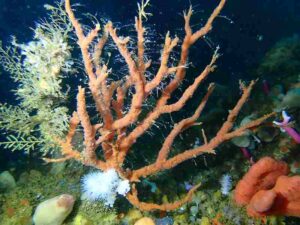
25. Barrel Sponge (Xestospongia testudinaria)
The large barrel-shaped sponge is arguably one of the most common species in the Great Barrier Reef.
It often occurs in deeper zones of the reef structure, and can grow to several meters in diameter.
*Characteristics of Poriferans
Poriferans are multicellular and simple animals that lack organs and tissues.
They possess a distinctive body structure with numerous channels and pores, which allow water to pass through their bodies.
Sponges also possess specialized cells called choanocytes that are used to filter and capture organic food particles from the water column [9].
As filter feeders, they are known to consume plankton and bacteria, along with organic debris present in the water column.
*Ecological Role of Poriferans as Great Barrier Reef Animals
The ecological role(s) of poriferans in the Great Barrier Reef is comprised of microhabitat provision, water quality maintenance, and nutrient cycling.
The complex hollow structures of sponges, create important shelter and microhabitat for diverse marine organisms.
These organisms include juvenile fish and small invertebrates, which find refuge among the channels and crevices of sponge colonies.
Sponges also have a vital role to play as natural media/systems of water filtration.
Through filter-feeding, they clean the water column in the reef by removing suspended particulates and excess nutrients, in such a manner that contributes to water quality and clarity.
In addition, when sponges die, their organic remains undergo biodegradation under the influence of decomposers, so that they contribute to nutrient cycling in diverse ways.
*What is Unique About Poriferans
Poriferans are unique because they represent the oldest living animal phylum on Earth [12].
They possess a remarkably-simple body structure and yet perform essential ecological functions like water filtration and shelter-provision, with high efficiency.
The ability of corals to maintain a healthy environment by hosting diverse marine life and filtering water, makes them an integral and indispensable part of the Great Barrier Reef ecosystem.
In addition, sponges produce some bioactive compounds that are potentially useful for medical application [20], a trait that increases their significance in both biomedical and ecological contexts.
G). Echinoderms (as a major category of Great Barrier Reef Animals)
Echinoderms are a group of marine animals that are well represented in the Great Barrier Reef, where they play a significant ecological role.
Examples of echinoderms in the Great Barrier Reef are; sea urchins, sea stars (or starfish), and sea cucumbers.
26. Sea Urchins
Sea urchins are distinguished by their flattened or spherical body which is covered in spines.
They are generally herbivorous in their feeding habit, and consume vascular and non-vascular plants, alongside algal material.
27. Sea Stars as Great Barrier Reef Animals
Sea stars are among the most well-known echinoderms.
They have multiple arms (typically about five in number, with some species having more than five arms [17]) and a star-shaped body, occurring in a variety of sizes and colors.
28. Sea Cucumbers
Sea cucumbers have a leathery skin, and a soft, elongated body.
They are detritivorous animals, and consume organic detrital matter on the ocean floor.
*Characteristics of Echinoderms
Echinoderms have some unique set of characteristics that distinguish from other marine animals in reef environments.
Characteristics of echinoderms include; vascular hydrological system, regenerative capabilities, radial symmetry, and tube feet. These are individually highlighted in the points below;
Echinoderms possess a complex vascular hydrological system which supports their locomotion, and enables them perform important functions like respiration and feeding.
Most echinoderms also exhibit radial symmetry, which implies that the parts of their body are arranged around an identifiable central point, like the spokes on a wheel [13].
Regenerative capabilities also occur in echinoderms, so that they are able to regrow damaged or lost body parts.
Lastly, echinoderms possess tube feet; which are a group of small, fluid-filled appendages that extend from their bodies. These structures are used for attachment, food-capture, and locomotion.
*Ecological Role of Echinoderms as Great Barrier Reef Animals
Echinoderms play multiple ecological roles in the Great Barrier Reef ecosystem; as detritivores, herbivores, predators, and contributors to overall reef dynamics.
Sea cucumbers are important detritivorous organism that consume decaying organic matter, and help recycle nutrients.
Sea stars function as predators by consuming crustaceans and mollusks, among other small invertebrates [2].
Sea urchins are generally herbivorous and graze on algae, helping to control the growth of algae on coral reefs.
Some echinoderms, such as the crown-of-thorns starfish, can significantly impact coral reef systems in terms of ecological dynamics.
Periodic population-outbreaks of crown-of-thorns starfish can result in intensive coral predation, and cause declines in coral abundance.
*What Marine Animals are Echinoderms?
Marine animals that are echinoderms, are those that are radially symmetrical with a vast hydrological system and distinctive ecological functions.
Asides the examples mentioned and discussed so far, other echinoderms include sea daisies, sea lilies, and brittle stars.
These diverse marine organisms are essential components of their habitat, and contribute to cycling, utilization and conservation of resources.
H). Coelenterates
Coelenterates, of the phylum Cnidarians, are a group of aquatic animals that can be found in the Great Barrier Reef.
They play critical ecological roles, and contribute to the biodiversity of the reef habitat.
Examples of coelenterates in the Great Barrier Reef are; corals, sea anemones and jellyfish.
29. Corals
Corals are the main builders of the Great Barrier Reef, contributing immensely to both biotic and abiotic factors of this ecosystem.
They are colonial organisms that are known to secrete calcium carbonate skeletons [18], which form the building blocks of the reef structure, and provide a rigid framework that serves as habitat for several other marine species.

30. Sea Anemones
Sea anemones are a group of sessile coelenterates that attach themselves to rocks or the sedimentary reef substrate.
They possess tentacles that surround a central oral aperture, and they are known to share symbiotic relationships with various other marine species.
31. Jellyfish as Great Barrier Reef Animals
Jellyfish, also known as medusae, are another example of coelenterates in the Great Barrier Reef.
They can be described as gelatinous and free-swimming organisms that possess tentacles equipped with stinging cells which are used to immobilize and capture prey.
*Characteristics of Coelenterates
Coelenterates share several characteristic features that define their phylum, including the possession of two body-forms, cnidocytes, and radially-symmetrical morphology.
Most coelenterates alternate between two main body forms;
a). The medusa form (bell-shaped and free-swimming)
b). The polyp form (tubular and sessile)
Coelenterates also possess specialized cells known as cnidocytes, which contain stinging cells called nematocysts [5].
This feature is used for defense, as well as prey-capture.
Lastly, coelenterates also typically exhibit radial symmetry, so that their body parts are arranged around a central axis.
*Ecological Role of Coelenterates as Great Barrier Reef Animals
Coelenterates play various ecological roles in the Great Barrier Reef ecosystem; including reef building, symbiotic sustenance, and food provision.
A major factor and mechanism behind the formation of coral reefs is the accumulation of calcium carbonate skeletal components secreted by corals.
Reef structures formed by this accumulation mechanism, provide essential habitats for numerous species in the marine environment, and support a complex food web
Coelenterates like corals, form symbiotic relationships with other organisms such as zooxanthellae (algae).
In the case of corals and zooxanthellae, the algae lives within coral tissues, providing the corals with essential nutrients through photosynthetic activity, while in return the corals provide a sheltered microhabitat that allows zooxenthellae to have access to solar radiation. Such relations are the foundation of ecologic sustainability in the entire reef.
Coelenterates like jellyfish are important as a source of food for various predatory organisms in the reef habitat, including sea turtles and fish.
*Three Examples of Coelenterates
Three examples of coelenterates are;
a). Moon Jellyfish (Aurelia aurita)
b). Brain Coral (Diploria labyrinthiformis)
c). Tube Anemone (Cerianthus sp.)
*General Habitat of Coelenterates
Coelenterates are found in the sea, and are exclusive to aquatic habitats. They live in various marine microhabitats worldwide, including shallow coastal zones, open ocean waters, and coral reefs.
*Status of Jellyfish as a Coelenterate
Jellyfish are coelenterates that belong to the taxonomic phylum Cnidaria, which includes a broad variety of marine organisms equipped with stinging cells called cnidocytes.
Jellyfish possess several of the characteristic features of coelenterates, like nematocysts for defense/prey capture, radial symmetry, and a gelatinous bell-shaped medusa form.
I). Aquatic Birds (as a major category of Great Barrier Reef Animals)
Aquatic birds are an important group of Great Barrier Reef animals.
They play various ecological roles as part of reef biodiversity, and are also relevant (in their functions) to the surrounding coastal areas.
Examples of aquatic birds in the Great Barrier Reef are; crested tern, brown bobby, and pied cormorant.
32. Crested Tern (Thalasseus bergii)
Crested term is a medium-sized seabird distinguished by a crest and distinctive black coloration on its heads.
It has excellent flight abilities, and forages for food sources like crustaceans and small fish, in the reef waters.

33. Brown Booby (Sula leucogaster)
Brown booby is a seabird with a striking appearance, including a white belly, brown body, and pointy long wings.
The bird exhibits significant diving skill, and captures fish (which serve as its prey) by plunging from great heights into the water.
34. Pied Cormorant (Phalacrocorax varius)
Pied cormorant is a dark-colored aquatic bird that swims low in the water while foraging for fish.
It is often seen perched on mangroves and rocks near the reef.
*Characteristics and Ecological Role of Aquatic Birds as Great Barrier Reef Animals
The ecological role, and characteristics of aquatic birds in the Great Barrier Reef can be summarized to include; swimming adaptations, predatory behavior, population control, and habitat modification/ecosystem engineering.
Aquatic birds in the Great Barrier Reef environment, possess webbed feet that are adaptations for efficient swimming in the water, and allow them to dive and catch underwater-prey.
Several aquatic birds in the Great Barrier Reef are piscivorous, meaning they feed mainly on fish. They have evolved multiple effective strategies for catching fish from the surface or underwater column.
Some aquatic bird species utilize coastal areas, sandbars and islands, sandbars near the Great Barrier Reef, as nesting sites. These locations are generally safe to lay eggs and raise their chicks away from terrestrial and typical-aquatic predators.
Aquatic birds like frigatebirds and brown boobies can travel far from shore areas in search of food. They often venture out into the open ocean, subsequently returning to the reef-zone to rest and roost.
*Kinds of Birds Living in the Great Barrier Reef
The Great Barrier Reef is home to diverse species of aquatic birds, including shorebirds, wading birds, and seabirds.
Several of these birds are migratory dwellers, which travel long distances seasonally in search of food and suitable breeding grounds.
J). Annelids
Annelids, commonly known as segmented worms, are an important group of organisms in marine ecosystems, including the Great Barrier Reef.
They have multiple ecological functions, and contribute to the reef's diversity.
Examples of marine Annelids include polychaete worms like the Christmas tree worm, which is discussed briefly below;
35. Christmas Tree Worm (Spirobranchus giganteus)
Polychaetes (Polychaeta) are a diverse category of marine annelids with thousands of unique species.
Their features include numerous body segments, each of which typically bears a pair of fleshy appendages referred to as parapodia.
Polychaetes exhibit a wide range of specialized adaptations and occur in various marine habitats, including the Great Barrier Reef.
The Christmas tree worm (Spirobranchus giganteus) is a specie of polychaete worm distinguished by its distinctive, brightly colored and spiral-shaped crowns.
Christmas tree worms are sessile, which means that they remain attached to substrates like rock surfaces or corals.
The crowns of Christmas tree worms are used for respiration and feeding.

*Characteristics and Ecological Role of Annelids
The roles and characteristics of annelids in the Great Barrier Reef can be summarized into; detritivorous facilitation of decomposition, sediment oxygenation, bioturbation, nutrient cycling, and food supply to predators. These are summarized into the points below;
Some marine annelids are detritivores, feeding on organic waste matter. These species play a vital role in the breakdown of remains of dead plants and animals, and contribute to nutrient cycling in the ecosystem.
Also, several annelids in the Great Barrier Reef are burrowers that live within the coral rubble, or sedimentary substrate. Their burrowing activities help to oxygenate the sedimentary substrate while facilitating the recycling of nutrients.
Burrowing annelids that live within the reef substrate act as bioturbators, that enhance nutrient exchange between the sediments and the water column, through active and continuous sediment mixing.
Annelids are an important source of food for various inhabitants of reef habitats, including crustaceans and fish.
*Overview of Marine Annelids in the Great Barrier Reef
The Great Barrier Reef plays host to a diverse array of marine annelids, which can be found in muddy, rock and sandy microhabitats of the reef, as well as within the main coral reef structure.
Polychaetes are the most well-known group of annelids that inhabit marine environments.
Their prevalence is due to a broad range of adaptations, and their geographical range encompasses several ocean habitats worldwide, including the Great Barrier Reef.
In general, the kinds of worms in the Great Barrier Reef are; segmented (Annelid) worms, flat worms (Platyhelminthes), and tubular marine worms.
Conclusion
Great Barrier Reef animals and their categories include;
A). Reptiles
1. Hawksbill Sea Turtle (Eretmochelys imbricata)
2. Green Sea Turtle (Chelonia mydas)
3. Saltwater Crocodile (Crocodylus porosus)
4. Sea Snakes (Multiple Species)
5. Marine Lizards (Multiple Species)
B). Mammals
6. Bottlenose Dolphin (Tursiops truncatus)
7. Dugong (Dugong dugon)
8. Australian Fur Seal (Arctocephalus pusillus doriferus)
9. Humpback Whale (Megaptera novaeangliae)
C). Fish
10. Parrotfish (Scaridae)
11. Clownfish (Amphiprioninae)
12. Butterflyfish (Chaetodontidae)
13. Giant Trevally (Caranx ignobilis)
14. Surgeonfish (Acanthuridae)
15. Anemonefish (Amphiprionidae)
16. Humphead Wrasse (Cheilinus undulatus)
D). Crustaceans
17. Shrimps
18. Lobsters
19. Crabs
E). Mollusks
20. Sea Snails
21. Giant Clams
22. Octopuses
23. Nudibranchs
F). Poriferans
24. Staghorn Sponge (Ptilocaulis walpersi)
25. Barrel Sponge (Xestospongia testudinaria)
G). Echinoderms
26. Sea Urchins
27. Sea Stars
28. Sea Cucumbers
H). Coelenterates
29. Corals
30. Sea Anemones
31. Jellyfish
I). Aquatic Birds
32. Crested Tern (Thalasseus bergii)
33. Brown Booby (Sula leucogaster)
34. Pied Cormorant (Phalacrocorax varius)
J). Annelids
35. Christmas Tree Worm (Spirobranchus giganteus)
References
1). Au, W.; Pack, A. A.; Lammers, M.; Herman, L.; Deakos, M. H.; Andrews, K. R. (2006). "Acoustic properties of humpback whale song." The Journal of the Acoustical Society of America 120(2):1103-10. Available at: https://doi.org/10.1121/1.2211547. (Accessed 26 July 2023).
2). Garrido, I.; Pardo, L. M.; Johnson, L. E.; Schories, D. (2021). "Selective Feeding by a Predatory Sea Star Across a Depth Gradient in Northern Patagonia, Chile." Frontiers in Marine Science 8. Available at: https://doi.org/10.3389/fmars.2021.636208. (Accessed 26 July 2023).
3). Gotelli, N. J.; Gilchrist, S.; Abele, L. G. (1985). "Population biology of Trapezia spp. And other coral-associated decapods." Marine Ecology Progress Series 21(1-2):89-98. Available at: https://doi.org/10.3354/meps021089. (Accessed 26 July 2023).
4). Haber, M.; Cerfeda, S.; Carbone, Calado, G.; Carbone, M.; Calado, G.; Gaspar, H.; Neves, R. C.; Maharaian, V.; Cimino, G.; Gavagnin, M.; Ghiselin, M. T.; Mollo, E. (2010). "Coloration and Defense in the Nudibranch Gastropod Hypselodoris fontandraui." Biological Bulletin 218(2):181-8. Available at: https://doi.org/10.2307/25664519. (Accessed 26 July 2023).
5). Halstead, B. W. (1987). "Coelenterate (cnidarian) stings and wounds." Clin Dermatol. 1987 Jul-Sep;5(3):8-13. Available at: https://doi.org/10.1016/s0738-081x(87)80003-2. (Accessed 26 July 2023).
6). Hawkins, E.; Gartside, D. F. (2008). "Social and Behavioural Characteristics of Indo-Pacific Bottlenose Dolphins (Tursiops aduncus) in northern New South Wales, Australia." Australian Mammalogy 30(2). Available at: https://doi.org/10.1071/AM08009. (Accessed 26 July 2023).
7). Hoffmayer, E. R.; Franks, J. S.; Shelley, J. P. (2005). "Recent Observations of the Whale Shark (Rhincodon typus) in the Northcentral Gulf of Mexico." Available at: https://doi.org/10.18785/gcr.1701.11. (Accessed 26 July 2023).
8). Jones, A. M.; Gardner, S.; Sinclair, W. T. (2008). "Losing 'Nemo': Bleaching and collection appear to reduce inshore populations of anemonefishes." Journal of Fish Biology 73(3):753 - 761. Available at: https://doi.org/10.1111/j.1095-8649.2008.01969.x. (Accessed 26 July 2023).
9). Lavrov; Al.; Bolshakov, F. V.; Tokina, D. B.; Freskovsky, A. V. (2022). "Fine details of the choanocyte filter apparatus in asconoid calcareous sponges (Porifera: Calcarea) revealed by ruthenium red fixation." Zoology (Jena). 2022 Feb;150:125984. Available at: https://doi.org/10.1016/j.zool.2021.125984. (Accessed 26 July 2023).
10). León, Y. M.; Bjorndal, K. A. (2002). "Selective feeding in the hawksbill turtle, an important predator in coral reef ecosystems." Marine Ecology Progress Series 245:249-258. Available at: https://doi.org/10.3354/meps245249. (Accessed 26 July 2023).
11). Merilaita, S.; Kelley, J. (2018). "Scary clowns: adaptive function of anemonefish coloration." Journal of Evolutionary Biology 31(10). Available at: https://doi.org/10.1111/jeb.13350. (Accessed 26 July 2023).
12). Mills, D. B.; Sperling, E. A. (2021). "Marine sponges in the once and future ocean." Global Change Biology 28(1). Available at: https://doi.org/10.1111/gcb.16053. Available at: https://onlinelibrary.wiley.com/doi/10.1111/gcb.16053. (Accessed 26 July 2023).
13). Morris, V. B. (2007). "Origins of radial symmetry identified in an echinoderm during adult development and the inferred axes of ancestral bilateral symmetry." The Royal Society, Proceedings of the Royal Society B 274(1617):1511-6. Available at: https://doi.org/10.1098/rspb.2007.0312. (Accessed 26 July 2023).
14). Patek, S. N. (2019). "The Power of Mantis Shrimp Strikes: Interdisciplinary Impacts of an Extreme Cascade of Energy Release." Integrative and Comparative Biology 59(6). Available at: https://doi.org/10.1093/icb/icz127. (Accessed 26 July 2023).
15). Richards, Z. T.; Day, J. C. (2018). "Biodiversity of the Great Barrier Reef—how adequately is it protected?" PeerJ 6(1). Available at: https://doi.org/10.7717/peerj.4747. (Accessed 26 July 2023).
16). Rotjan, R.; Lewis, S. M. (2008). "Impact of coral predators on tropical reefs." Marine Ecology Progress Series 367:73-91. Available at: https://doi.org/10.3354/meps07531. (Accessed 26 July 2023).
17). Tomholt, L.; Baum, D.; Wood, R. J.; Weaver, J. C. (2023). "High-throughput segmentation, data visualization, and analysis of sea star skeletal networks." J Struct Biol. 2023 Jun;215(2):107955. Available at: https://doi.org/10.1016/j.jsb.2023.107955. (Accessed 26 July 2023).
18). Traylor-Knowles, N. (2021). "Unlocking the single-cell mysteries of a reef-building coral." Cell 184(11):2802-2804. Available at: https://doi.org/10.1016/j.cell.2021.05.007. (Accessed 26 July 2023).
19). Udyawer, V.; Cappo, M.; Simpfendorfer, C. A.; Heupel, M. R.; Lukoschek, V. (2014). "Distribution of sea snakes in the Great Barrier Reef Marine Park: Observations from 10 yrs of baited remote underwater video station (BRUVS) sampling." Coral Reefs 33(3):Advance online publication. doi:10. 1007/ s00338-014-1152-3. Available at: https://doi.org/10.1007/s00338-014-1152-3. (Accessed 26 July 2023).
20). Varijakzhan, D.; Loh, J. Y.; Yap, W.-S.; Yusoff, K.; Seboussi, R.; Swee-Hua, E.; Koksong, L.; Chong, C. M. (2021). "Bioactive Compounds from Marine Sponges: Fundamentals and Applications." Marine Drugs 19(246). Available at: https://doi.org/10.3390/md19050246. (Accessed 26 July 2023).
21). Yan, H.; Liu, C.; An, Z.; Yang, W.; Yang, Y.; Huang, P.; Qiu, .; Pengchao, Z.; Zhao, N.; Fei, H.; Ma, X.; Shi, G.; Dodson, J. R.; Hao, J.; Yu, K.; Wei, G.; Yang, Y.-N.; Jin, Z. D.; Zhou, W. (2020). "Extreme weather events recorded by daily to hourly resolution biogeochemical proxies of marine giant clam shells." Proceedings of the National Academy of Sciences 117(13):201916784. Available at: https://doi.org/10.1073/pnas.1916784117. (Accessed 26 July 2023).
22). Zavaleta-Lizárraga; Morales-Mávil, J. E. (2013). "Nest site selection by the green turtle (Chelonia mydas) in a beach of the north of Veracruz, Mexico Zavaleta-Lizárraga y Morales-Mávil." REVISTA MEXICANA DE BIODIVERSIDAD 84(3):927. Available at: https://doi.org/10.7550/rmb.31913. (Accessed 26 July 2023).
